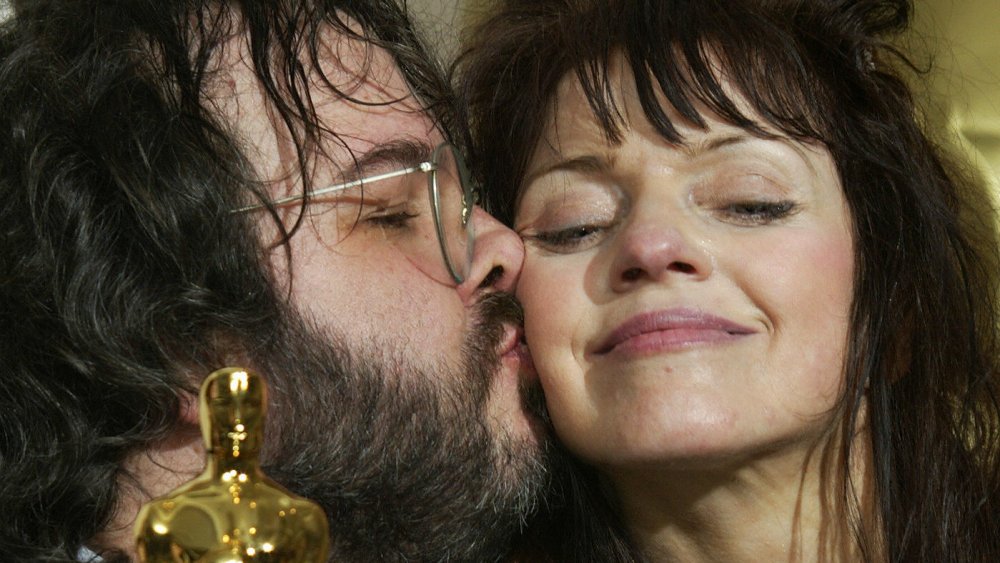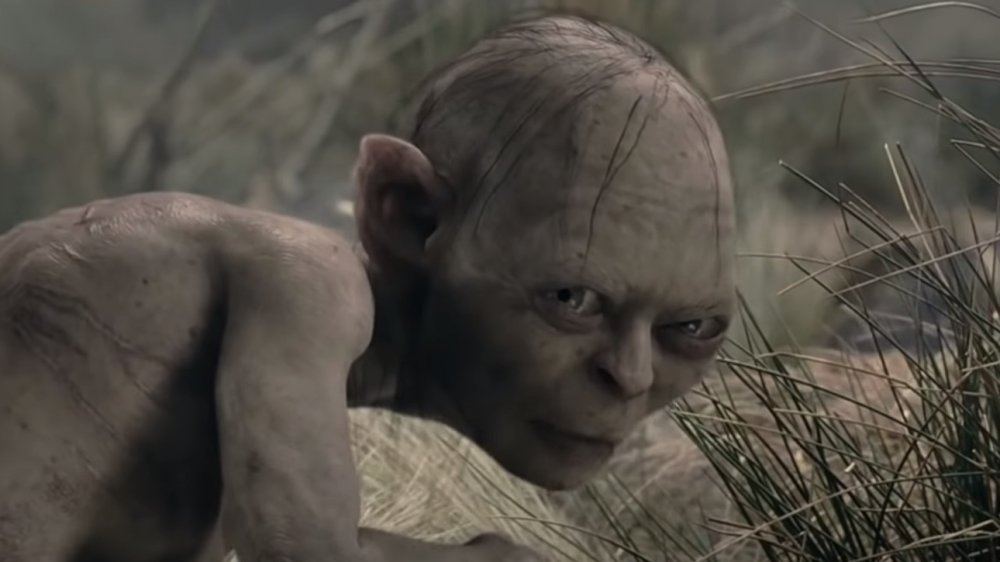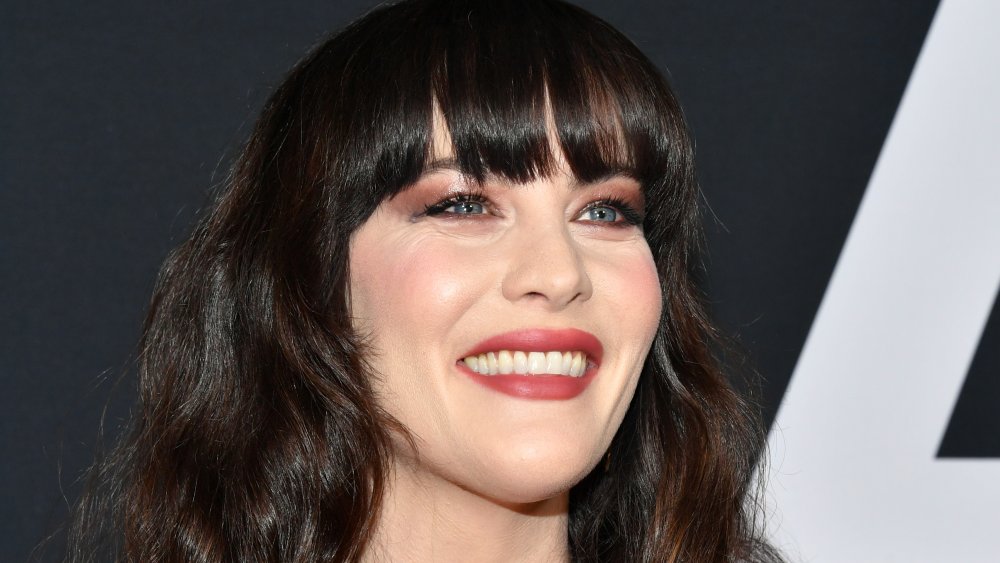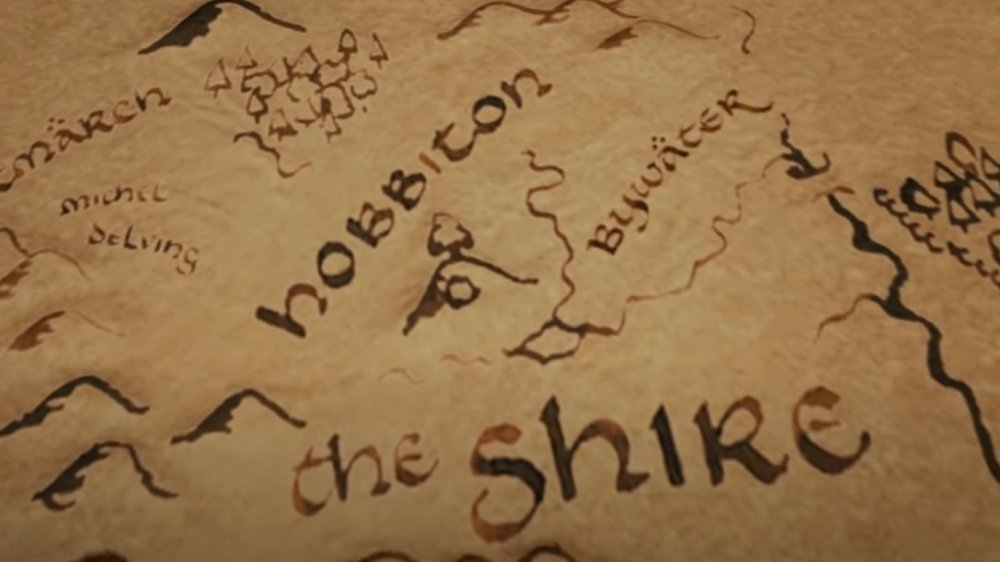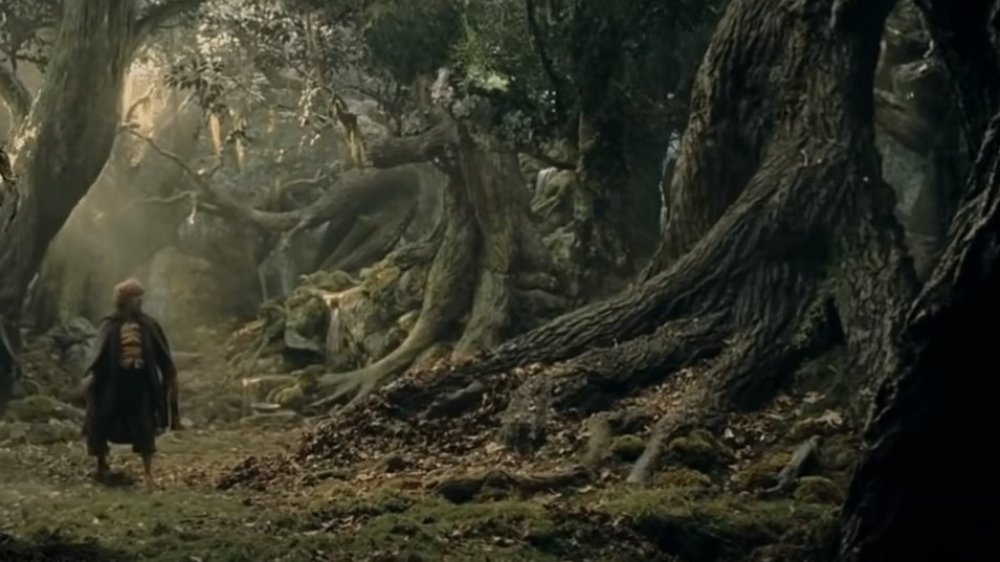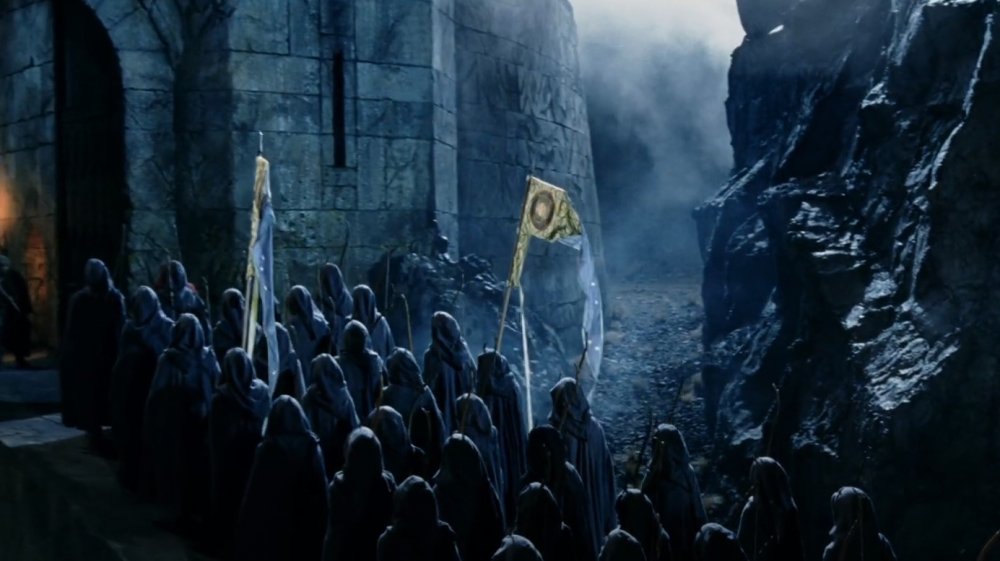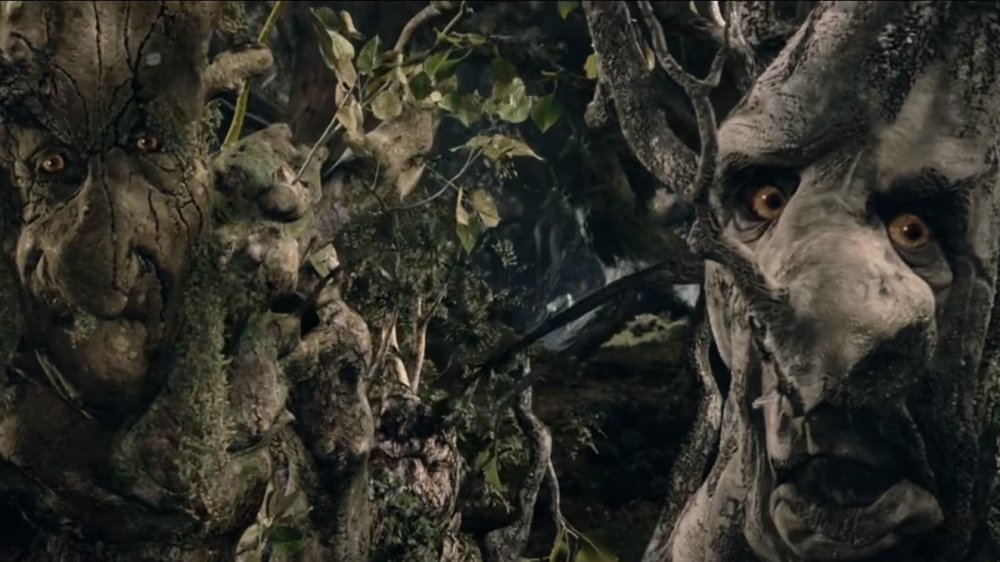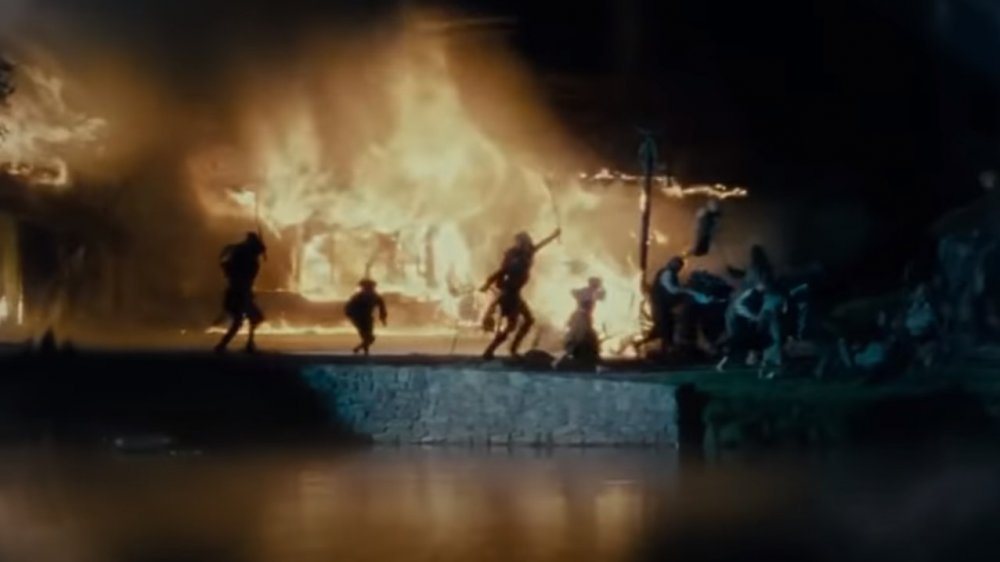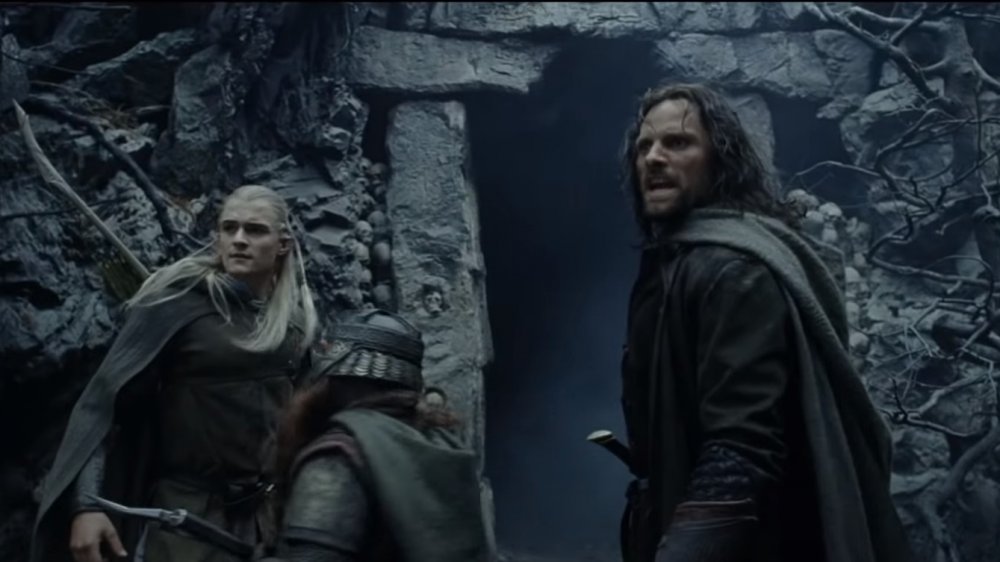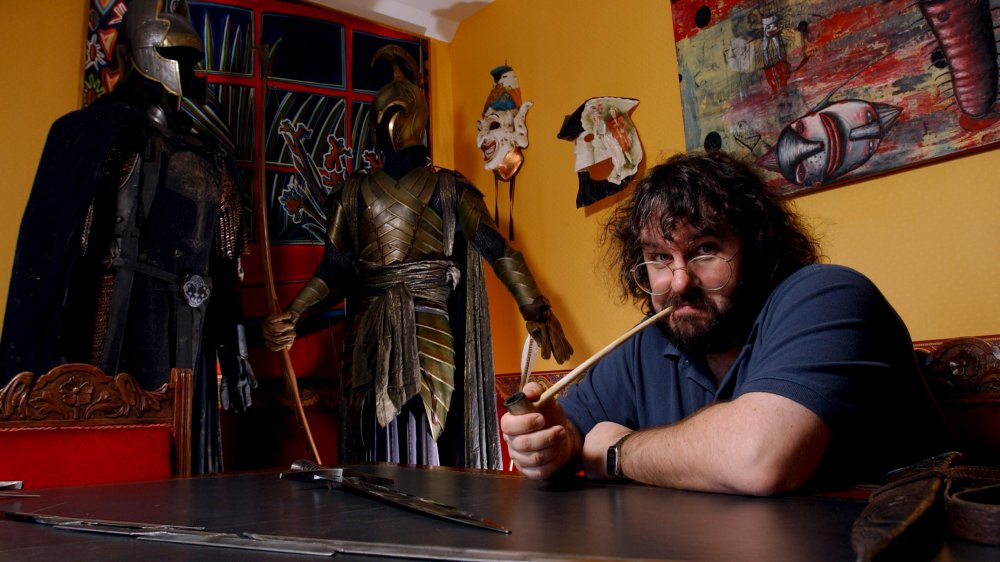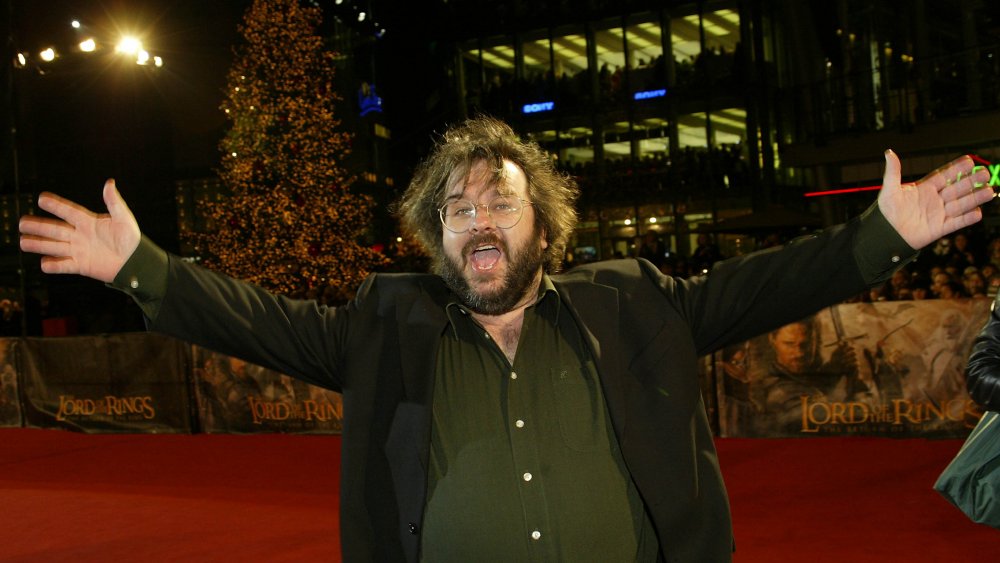Why These Characters Were Left Out Of The Lord Of The Rings Movies
You've probably heard of Gandalf. Immortal wizard, really into fireworks, pals around with Hobbits. How about Frodo? Savior of Middle-earth? He likely rings a few bells. Aragorn, Gollum, Merry, Pippin, Legolas — you know and love them all, as do millions of other fans of The Lord of the Rings films around the world.
Lovingly based off of J.R.R. Tolkien's legendary trilogy, these movies still made a few changes over the course of the page-to-screen adaptation process. As is the case for every other beloved series-turned-film-franchise, some people hardly noticed the alterations, while some take massive umbrage. As thousands raced to the theater for repeat viewings, got sweet Tengwar tattoos, and readied their Halloween costumes, others fumed. Where was Tom Bombadil? Where were Elrond's sons? Where was dear old Quickbeam?
Whether you're one of the former group or the latter, we're here to explain why all those characters (and more) were really left out of The Lord of the Rings movies.
Adapting for the big screen
When the first novel in The Lord of the Rings trilogy was released in 1954, it was a rarity. The world at large wasn't yet familiar with the well-worn fantasy tropes that have become cherished by so many nerds and normies alike in our current media landscape. The idea of a small hero facing seemingly insurmountable odds might be a tale as old as humanity itself, but the idea that the hero was doing this alongside dwarves, elves, and whatever Gollum is, was revolutionary.
Audiences loved the book and people began thinking this story would make one heck of a movie. Hollywood executives tried for years to get The Lord of the Rings onto the big screen, with Tolkien selling film rights to United Artists in 1969. While there were some attempts in the late 70's and 80's to bring the epic story to life through animation, they were not the iconic successes studios longed for. A big part of the problem is obvious: How is one to cram all that story into a movie one can reasonably expect audiences to absorb in one sitting? This question would dog all future Tolkien adaptations, and lead to some tough choices.
Screen time for the stars
Imagine you're a Hollywood fat cat, giving the go-ahead to a studio to finally make The Lord of the Rings. As with most blockbusters, you know one of the key ingredients is a killer cast. Finding actors to bring to life the most iconic and beloved fantasy series of all time is no small feat.
Eventually, you get stars attached. It serves the story and the studio to have them each get as much screen time as possible. From a storytelling perspective, an audience needs time to get to know a character, and, hopefully, fall in love with them. Would audiences have been as devastated by Gandalf's fall off the bridge in Moria if we'd only spent five minutes with him right before that moment? No way.
Tolkien's masterwork features a plethora of named characters, to the point that no movie would have been able to include them all. When Peter Jackson and fellow screenwriters Fran Walsh and Phillipa Boyens were given the monumental task of crafting a movie script from the books, it was likely clear from the get-go that cuts would have to be made.
Fatty Bolger
Which beloved characters got the ax were not decisions to be made lightly. Peter Jackson and his fellow writers went through many drafts of the script, considering it from all angles. Shaving off book-bound characters can't have been easy, but they had to start somewhere. One early character cut from the final films is Fredegar "Fatty" Bolger.
As you might guessed from the whimsical name, Fatty Bolger is a Hobbit. In the books, Frodo's faithful group of pint sized friends includes Fatty Bolger, alongside Merry, Pippin, and Samwise. The narrative need to focus on the Hobbits likely drove the team adapting the books towards cutting out any extraneous roles — ergo, bye bye Fatty Bolger, who stays put in Hobbiton. Moreover, Fatty's character in the books is part of a careful plan to make it seem like Frodo is still living at home. The timeline of the Hobbits' flight from Hobbiton is different in the films, thus rendering Fatty's ruse unnecessary.
Tom Bombadil
Arguably the most noticeable name left out of the movies is also the most powerful character we meet in the books: Tom Bombadil. Early on in The Fellowship of the Ring the Hobbits get into a bit of a jam with a hungry tree and then later some Barrow-wights. Both times they are saved by the ancient and enigmatic Tom Bombadil. He looks like a relatively normal man, but exhibits powers far beyond what mortals are capable of. He rolls up with a plate full of flowers, frees the Hobbits from a crotchety old willow trying to eat them up, and proceeds to take the ring from Frodo and pop it onto his hand ... without disappearing.
He takes the Hobbits back to his house, which he shares with his wife Goldberry, another beloved figure in the books. She's thought by many Tolkien scholars to be a water spirit associated with the nearby river.
While all this sounds like a pretty cool movie idea in its own right, Jackson and company knew it was important to have each scene in the movie tie into the greater narrative arc they were trying to creat. They didn't view these characters as having much impact on the later story, so Bombadil and Goldberry had to go.
Glorfindel
The Lord of the Rings is crowded with a myriad of characters toting swords, bows, and mythical items. The narrative of the films, however, needed to focus most of the story on the Fellowship charged with destroying the ring, which doesn't leave a lot of screen time for many of those brave, noble warriors crowding the battlefields. Nine guys is a pretty big number of leads for any movie series, and that's without counting other essential characters like Gollum, Elrond, Theoden, and Arwen. Oh, and Galadriel ... oh, and Bilbo. You see the problem.
Glorfindel is one notable warrior left out of the script for the movies, which was noticeable to some Tolkien fans because of his sheer awesomeness in the books. He's an ancient elf with a pretty impressive resume, including being brought back from the dead. In the books, he is present at the Council of Elrond, where the assembled characters debate what to do with the One Ring. A town hall meeting doesn't exactly make for great blockbuster action however. Moreover, while there, Glorfindel suggests giving the ring to Tom Bombadil, who was also cut for narrative cleanliness. The choice was easy: Glorfindel was cut.
Noticeably, the writers gave his biggest action sequence in the books to Arwen. The scene where she rides across the river, bringing Frodo into Rivendell? Originally, that was Glorfindel's doing.
Quickbeam
While we could definitely watch an entire spinoff about these mysterious tree-folk, the Ents were grievously axed from the films. Take Quickbeam, a middle-aged Ent from the books. He's got major Groot vibes in that he's one of the first Ents to make up his mind about going to war against Isengard. His battle readiness and cheery disposition are beloved of fans of the books. Moreover, he befriends Merry and Pippin, a relationship of which we are jealous. Who doesn't want to tromp around an ancient forest with an eons-old tree-dude? But in a trilogy with a run time over nine hours, hard cuts had to be made.
Audiences had already been introduced to Treebeard, the Ent Gandalf entrusts Merry and Pippin with. His character is enough to introduce audiences to the concept of Ents and showcase their powers and culture. Another Ent might have felt redundant, and, given the fact of the Ents' very ... slow ... speech, extended the run time beyond reasonable length.
Bill Ferny
A sizable chunk of The Lord of the Rings books is dedicated to Hobbiton. The first few chapters are entirely devoted to the Hobbits' history, culture, and daily life, in fact. In the films, audiences get only a quick (if vivid) glimpse of their pastoral ways.
The books essentially begin and end in Hobbiton. After the One Ring is destroyed, the folks of Hobbiton and Hobbit-dominated Bree are still plagued with problems. Bill Ferny, a human living side-by-side with Hobbits in that area of Middle-earth, is a big part of that unrest. Like many men, he is easily seduced by the forces of evil, and acts as an agent of Saruman.
Ferny ushers in a darker time than anyone in Hobbiton had ever known, all while Frodo and his friends are away. When Merry, Pippin, Sam, and Frodo return, they help to free Hobbiton from its thuggish usurpers, captained by Bill Ferny.
Since the movies don't spend as much time in Hobbiton as the books do, adding Ferny and his story to this already complicated tale would have meant sacrificing other scenes. Ferny was cut, and Hobbiton spared.
Elrond's sons, Elrohir and Elladan
The narrative arc of the Fellowship is the heart and soul of The Lord of the Rings. While there are three movies devoted to their story, it was imperative that audiences fall in love with each member of the Fellowship. That took screen time, and careful planning.
Some characters were left out because they would have stolen focus and screen time from other members of the Fellowship. Adding in a new character takes time, and explaining their backstory can take even more. When you factor in the nearly immortal elves, whose backstories stretch back thousands and thousands of years ... well, it can get pretty complicated pretty quick.
Elrond's daughter, Arwen, serves as the love interest for Aragorn, also known as Strider. That's easy enough to explain, but Elrond's family tree is actually a little more complicated than just one beautiful, powerful daughter. He also has two twin sons: Elrohir and Elladan. They're pretty awesome warriors in their own right, who are also good buddies with the king-to-be.
In the books, they accompany Aragorn, Legolas, and Gimli on their trip through the Paths of the Dead. It would have been truer to the books to have them there, but it also may have reduced the emotional tension surrounding the three friends going it alone that makes the scene in the film so excellent.
A guiding vision and difficult choices
Adapting any piece of art into another medium isn't easy. Adapting J.R.R. Tolkien's masterwork to the silver screen is one of the most daunting adaptations to take on of all. But it was accomplished with great success by Fran Walsh, Phillipa Boyens, and their fearless head writer and director, Peter Jackson.
Ultimately, what steered the trilogy to success was Peter Jackson's vision. The movie made millions at the box office, recouping its production costs and then some. It was met with critical acclaim for its performances and its masterful special effects and costuming work, even scooping up some Oscars. And most importantly, fans loved it. It is incalculable how many cosplays, Halloween costumes, and backyard LARPing sessions the trilogy has inspired.
Right from the start of the project, Jackson never intended to completely and faithfully re-create the books. He knew from the beginning that he and his fellow filmmakers were only giving their interpretation of Tolkien's work. Translating that to film meant cutting a lot of characters, even ones fans of the original text adore. That's just what you have to do when you make something like The Lord of the Rings.
Making a box office hit
Hollywood is a rough town. The business of making movies is competitive, and generally speaking, making money for the studio and turning a profit for investors trumps artistic vision.
While The Lord of the Rings movies were made with lots and lots of investment from the studio, in reality, there is only ever so much time and money available for any given project. The process of adapting the books, working on the fabulous costumes and props, and filming and going into post-production took years of dedicated work. With a project this ambitious and expensive, Peter Jackson needed to make sure that the movies would be a box office hit.
It was important to make the jump to the big screen with plenty of Hollywood panache. This meant going a little heavier on the action and easing up a little bit on the kindly, bearded forest guy who introduces the gang to his river-borne wife. Scenes like Legolas shield-surfing down an orc-strewn staircase were added, while scenes of Elrond's twin sons were cut. But hey, if you're still mad, take heart — Amazon's Lord of the Rings prequel is on the way.
